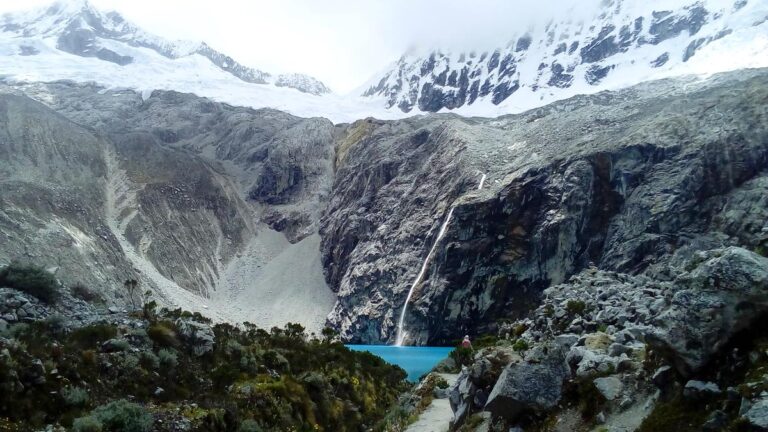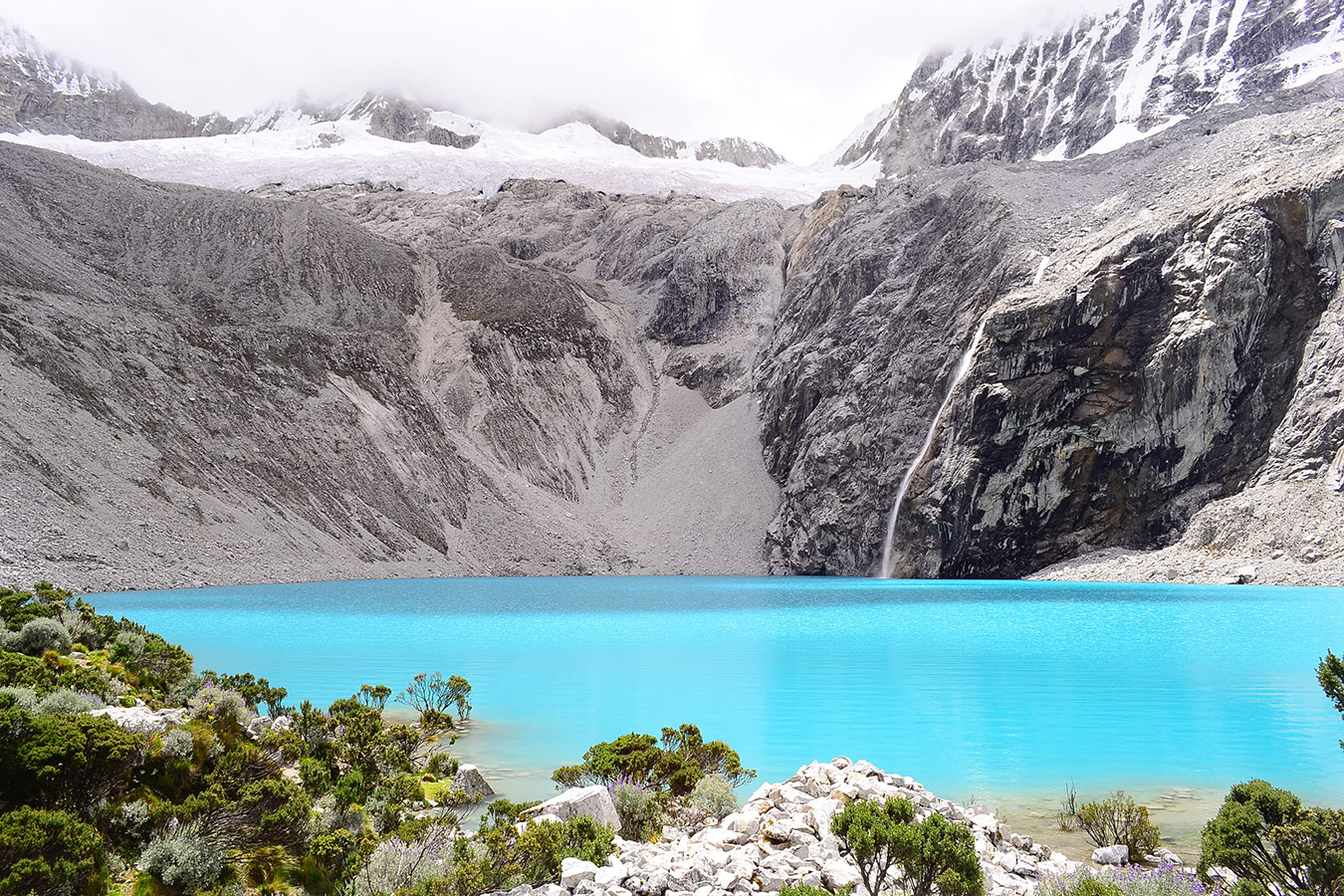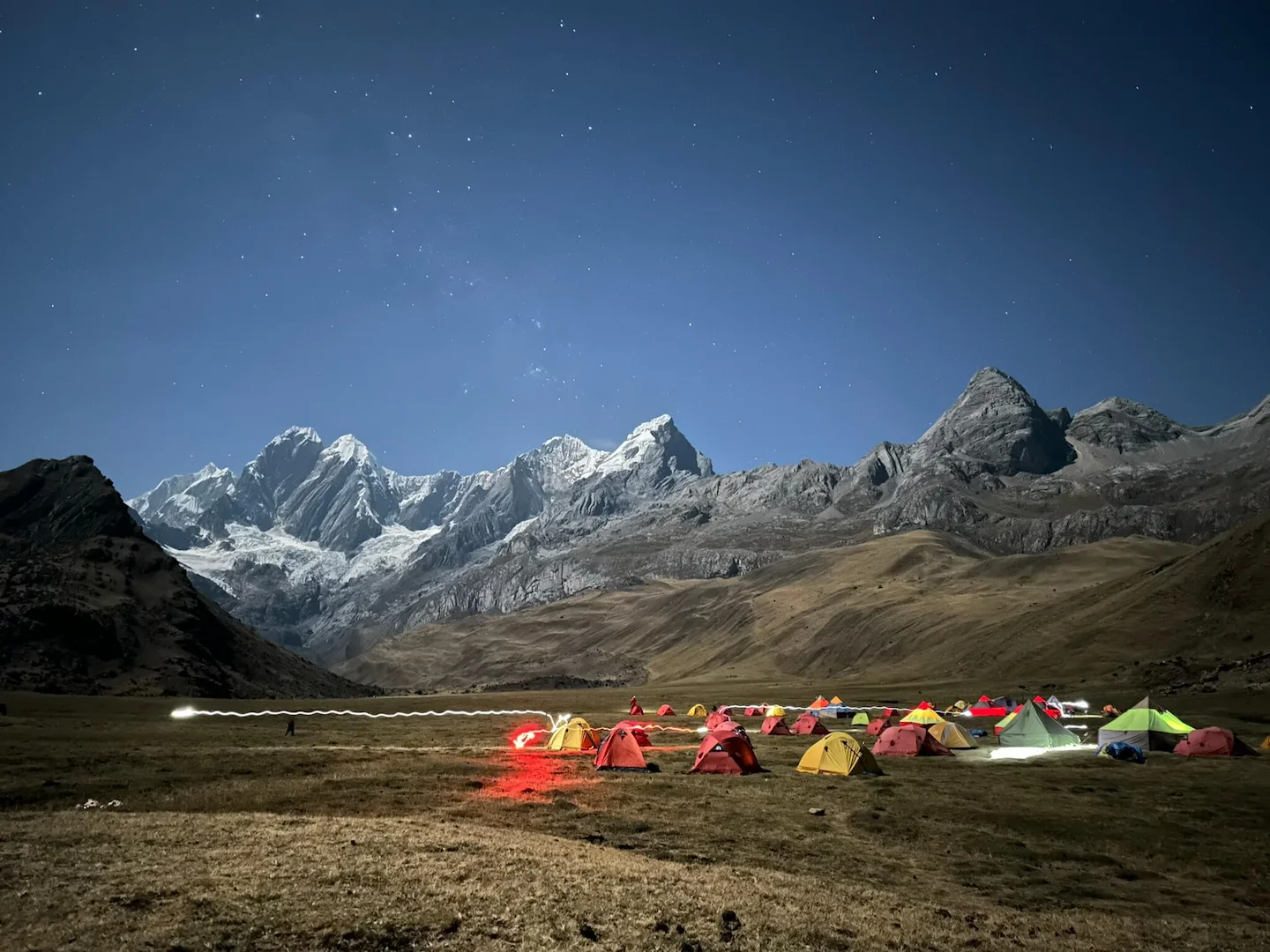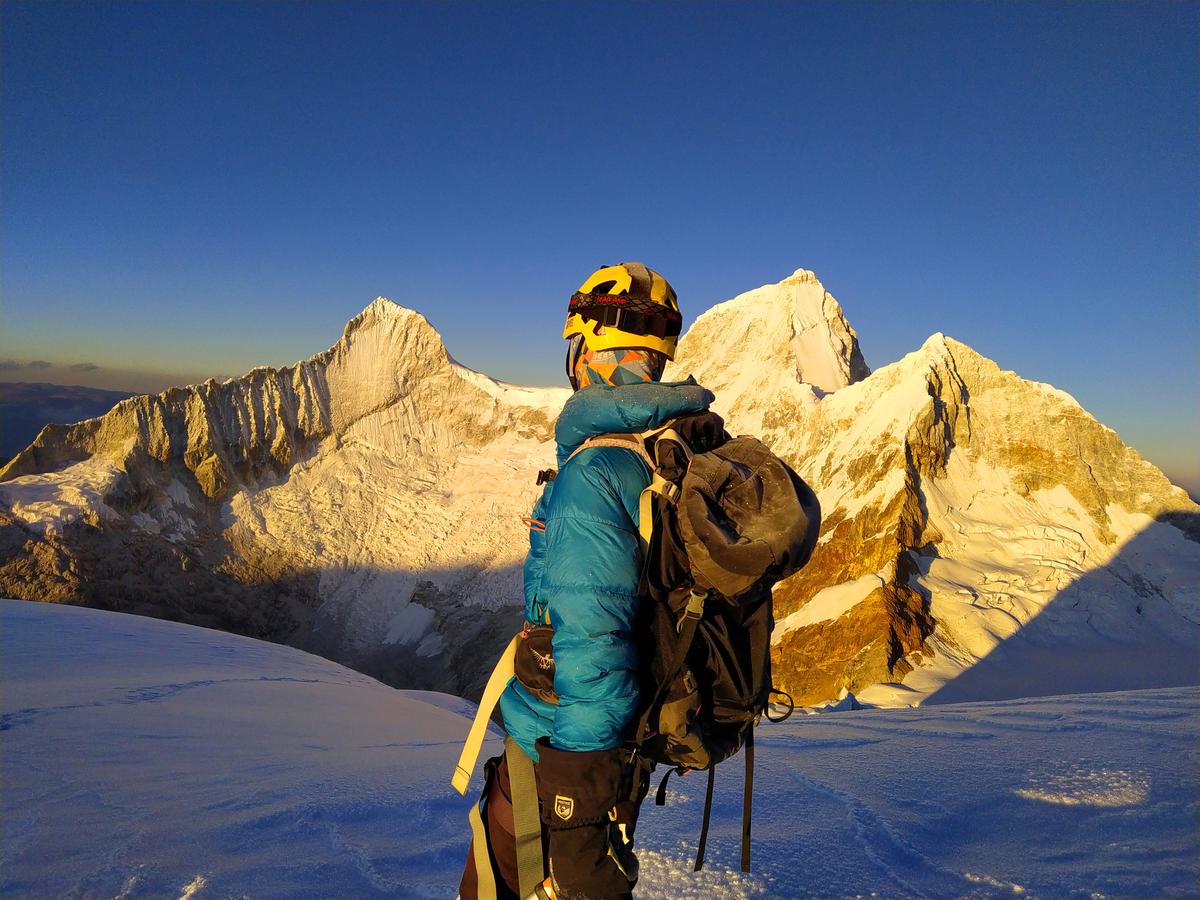This is one of the most spectacular and challenging routes in the Cordillera Blanca, combining a hike around the Alpamayo, the world’s most beautiful mountain, with a climb to the Nevado Pisco, the balcony of the Cordillera Blanca.
My experience: I recently had the opportunity to experience this 12-day adventure, thanks to the Peru Adventures Travel company.
Day 1: Huaraz (3,100 m) - Hualcayan (3,140 m) - Huishcash (4,200 m)
We left Huaraz early in the morning in a private transport to the village of Hualcayan, where the mules and donkeys that would carry our gear were waiting for us. Our guide, an experienced mountaineer who would accompany us throughout the expedition, also joined us. After organizing all the gear, we started walking along a trail that rose gently up the valley. The landscape was stunning, with views of the Santa Cruz, Quitaraju, and Milhuacocha snow-capped mountains. After about 4 hours of hiking, we reached the first camp in Huishcash, a place surrounded by meadows and wildflowers. There we were greeted by the cook with a delicious dinner and we settled into our tents for the night.
Day 2: Huishcash - Ruinapampa (4,400 m)
The second day was more demanding, as we had to overcome the first mountain pass of the circuit: the Cullicocha pass (4,850 m). To do this, we followed the trail that skirted the beautiful Cullicocha lagoon, where the Santa Cruz snow-capped mountain was reflected. The ascent was tough, but it was worth it for the panoramic views that opened up from the pass. From there we could see the Alpamayo for the first time, with its pyramidal shape and ice walls. We also saw other snow-capped mountains such as the Quitaraju, the Jancarurish, and the Tayapampa. After a brief stop to take photos and regain energy, we began the descent to the Alpamayo valley. We passed through several Andean villages, such as Cruze Alpamayo and Osoruri, where we could appreciate the culture and hospitality of their inhabitants. Finally we reached the camp in Ruinapampa, a spacious and green place where we camped next to a river.
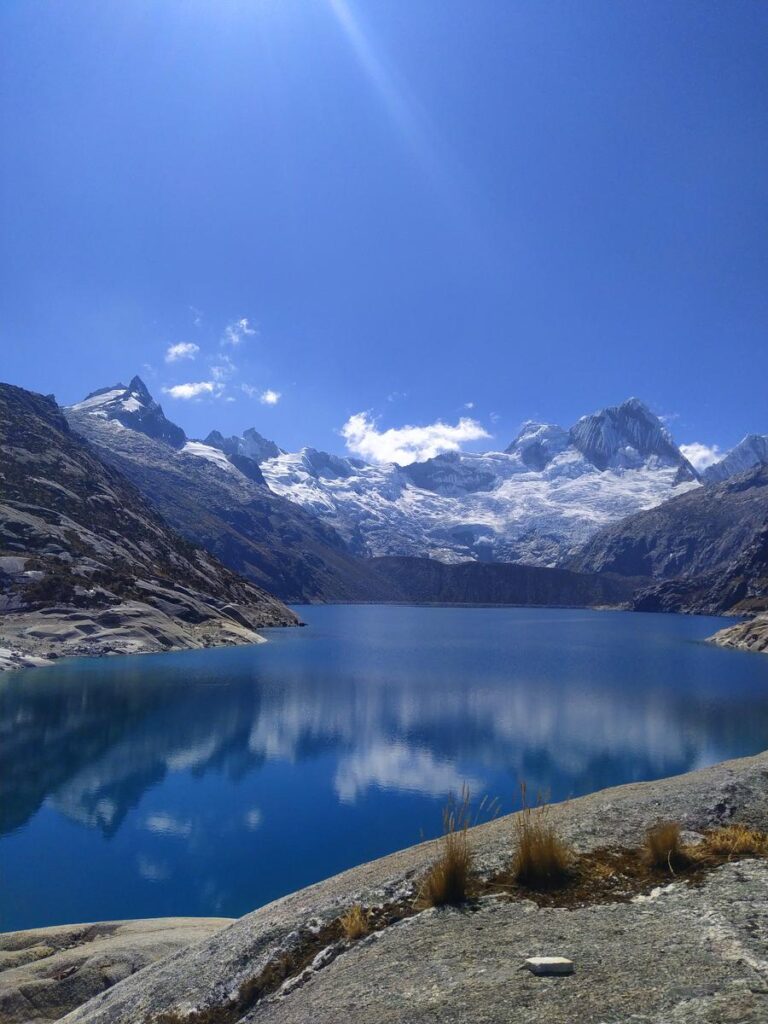
Day 3: Ruinapampa - Jancarurish (3,800 m)
The third day was more relaxed, as we only had to walk about 3 hours to reach the Alpamayo base camp in Jancarurish. The trail descended through the valley until it reached a flat area where the camp was located. We settled in a privileged place, with a direct view of the Alpamayo and the Quitaraju. The rest of the day was dedicated to resting and enjoying the landscape. In the evening, we saw a stargazing show that illuminated the sky and the mountain.
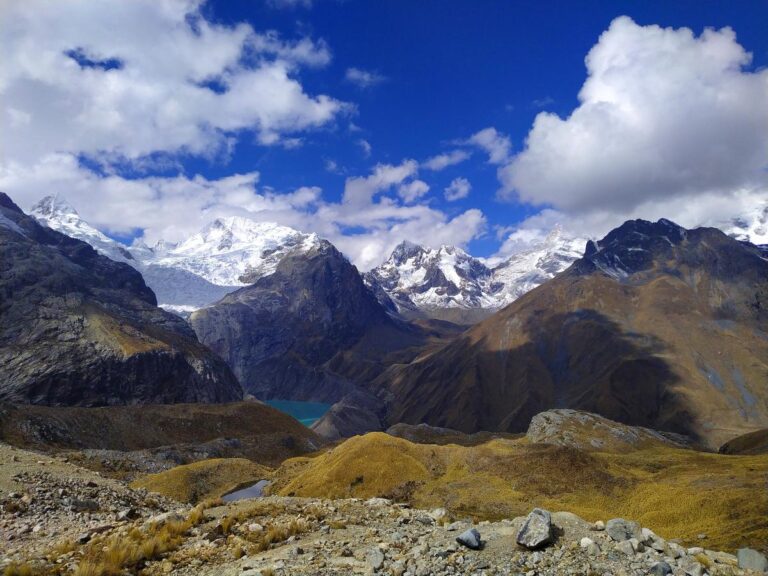
Day 4: Jancarurish - Alpamayo Mirador (4,450 m) - Jancarurish
The fourth day was one of the most exciting, as we went to the Alpamayo mirador, the closest point to the mountain from where you can appreciate its beauty in all its splendor. To do this, we left camp early and climbed a steep trail that took us to the Vientunan pass (4,650 m). From there we had an impressive view of the Alpamayo and the Quitaraju, as well as other snow-capped mountains such as the Artesonraju, the Paria, and the Pucajirca. Then we went down the other side of the pass to reach the Alpamayo mirador (4,450 m), where we were left speechless by the majesty of the mountain. It was like seeing a postcard in real life, with its perfect shape and contrasting colors. We took many photos and stayed for a while contemplating the scene. Then we returned the same way to the camp, where a well-deserved lunch awaited us.
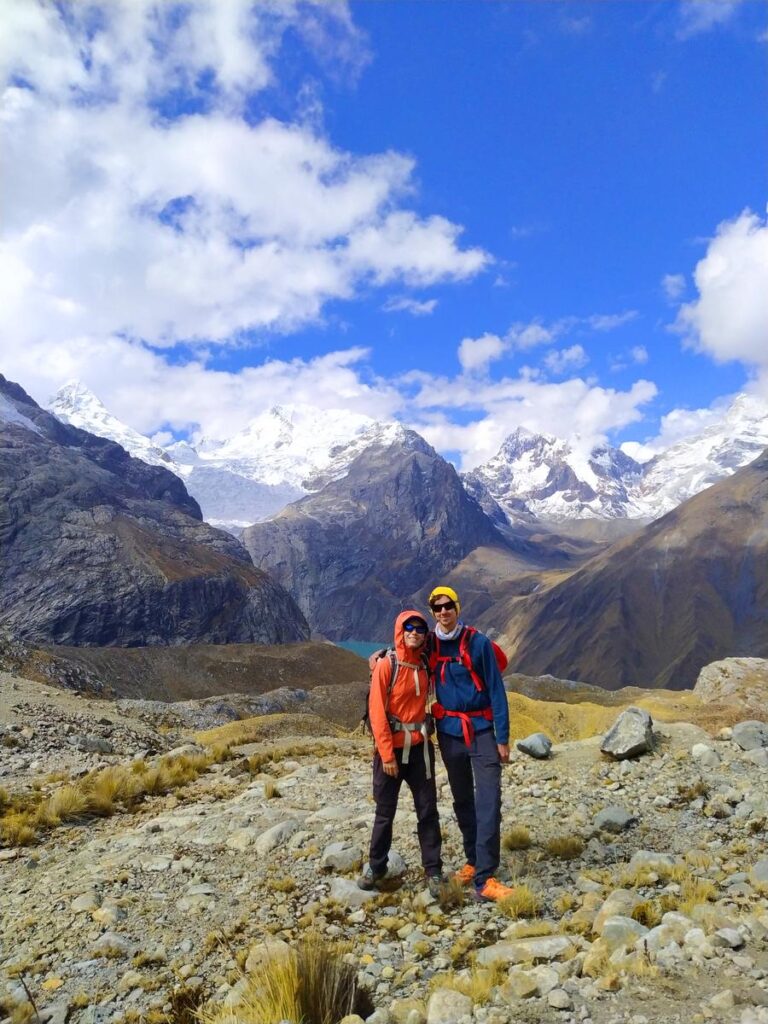
Day 5: Jancarurish - Huillca (4,000 m)
The fifth day was another long hiking day, as we had to cross the second mountain pass of the circuit: the Cara Cara pass (4,830 m). To do this, we left camp and followed the trail that climbed up the Safuna valley. The ascent was gradual at first, but it became more difficult as we gained altitude. The Cara Cara pass offered us a different view of the Alpamayo and the Quitaraju, from their north face. We could also see the Safuna lagoon, which is turquoise in color, and the Jancarurish glacier. After a few hours of climbing, we reached the pass, where we took a break to catch our breath and enjoy the views.
Day 6: Huillca - Jancapampa (3,600 m)
The descent from the Cara Cara pass was steep, but it was worth it to reach the beautiful Jancapampa valley. The trail followed a stream through a lush forest, and we were surrounded by wildflowers and birdsong. After about 4 hours of hiking, we reached the camp in Jancapampa, where we spent the night.
Day 7: Jancapampa Valley - Quishuar (3,800 m)
The seventh day was another long hiking day, as we had to cross the third mountain pass of the circuit: the Tupatupa pass (4,400 m). To do this, we left camp and followed the trail that climbed up the Jancapampa valley. The ascent was moderate at first, but it became more difficult as we approached the pass. The Tupatupa pass offered us a panoramic view of the Cordillera Blanca, where the snow-capped peaks of Pucajirca, Taulliraju, and Contrahierbas stood out. After crossing the pass, we began the descent towards the Quishuar valley. We passed by the Huecrococha lagoon, where we took a break for lunch and to enjoy the scenery. Then we continued down until we reached the camp in Quishuar, a spacious and green place.
Day 8: Quishuar - Tuctu (4,200 m)
The eighth day was more demanding, as we had to overcome the fourth and final mountain pass of the circuit: the Punta Unión pass (4,750 m). To do this, we left camp and followed the trail that climbed up the Quishuar valley. The ascent was tough, but it was worth it for the spectacular views that opened up from the pass. From there we could see the Taulliraju, Chacraraju, Pisco, Huandoy, and Huascarán snow-capped peaks. We also saw the Morococha and Taullicocha lagoons, which are a deep blue color. After a brief stop to take photos and regain energy, we began the descent towards the Huaripampa valley. We passed through several Andean villages, such as Tuctubamba and Colcabamba, where we could appreciate the culture and hospitality of their inhabitants. Finally we reached the camp in Tuctu, a quiet and welcoming place.
Day 9: Tuctu - Vaqueria - Yuraccoral (3,900 m)
The ninth day was the last day of hiking on the Alpamayo circuit. We only had to walk about 2 hours to reach the village of Vaqueria, where a private transport was waiting for us to take us to Yuraccoral. The trail descended through the Huaripampa valley until we reached Vaqueria, where we said goodbye to the arriero.
Day 10: Yuraccoral (3,900 m) - Base Camp Pisco (4,600 m)
The tenth day was the start of the second part of the expedition, which consisted of the climb to the Nevado Pisco. To do this, we said goodbye to our cook and left Yuraccoral for the Pisco base camp. The landscape was stunning, with views of the Huascarán, Huandoy, Chopicalqui, and Yanapaccha snow-capped peaks. After about 3 hours of hiking, we reached the base camp of the Pisco, where we settled in the Refugio Peru for the night.
Día 11: Campamento base - Cumbre del Pisco (5,752 m) - Campamento base (4,600 m)
The eleventh day was the most exciting and challenging day of the expedition, as we went to the summit of the Pisco. To do this, we left the base camp very early in the morning, around 2 am, and started walking with our headlamps on a trail that took us to the glacier. There we put on our crampons, ice axes, and ropes, and started climbing the ice.
The ascent was tough, but fun, as we had to overcome several obstacles such as crevasses, cornices, and steep slopes. The weather was favorable, with clear skies and moderate temperatures. After about 5 hours of climbing, we reached the summit of Pisco, where we were greeted by an incredible 360° view from its peak.
From there we could see the most iconic snow-capped peaks of the Cordillera, such as Huascarán, Huandoy, Chopicalqui, Chacraraju, Artesonraju, and Alpamayo. It was an indescribable feeling of joy and satisfaction for having achieved our goal. We took many photos and stayed for a while contemplating the scene. Then we started the descent back to base camp.
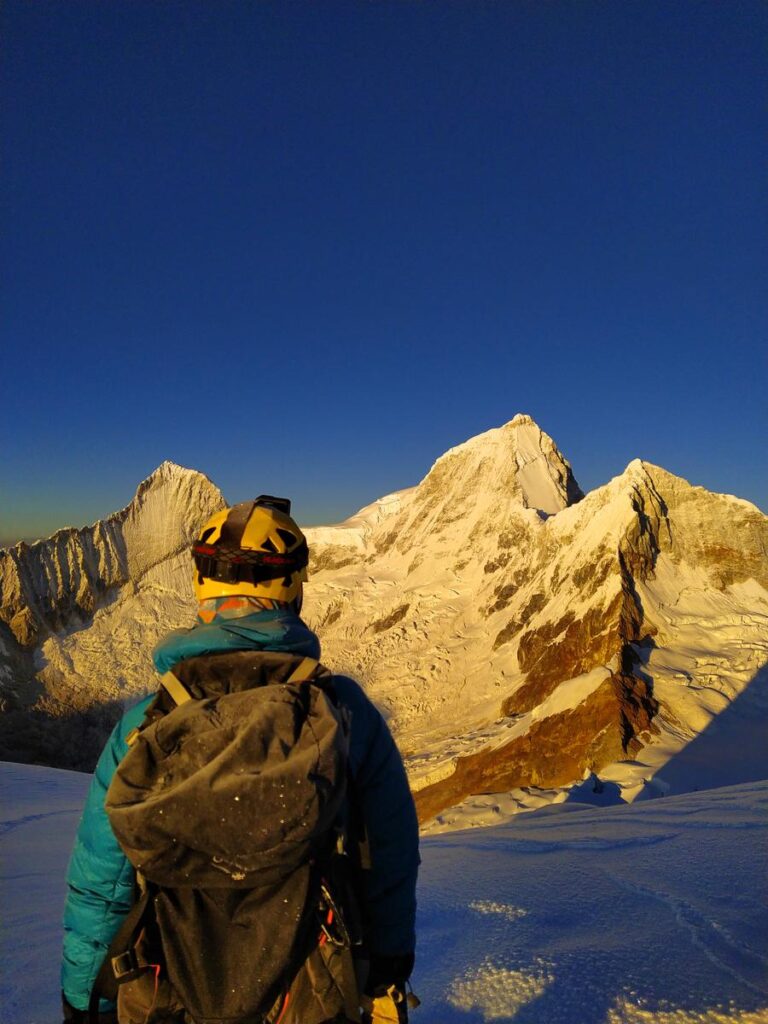
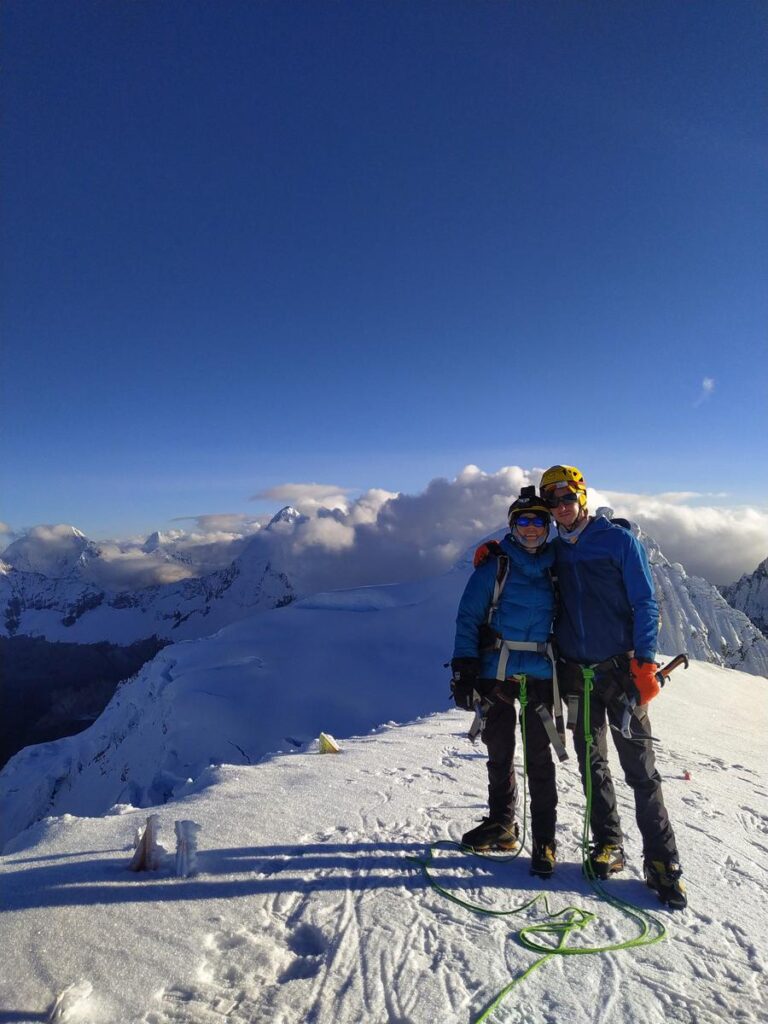
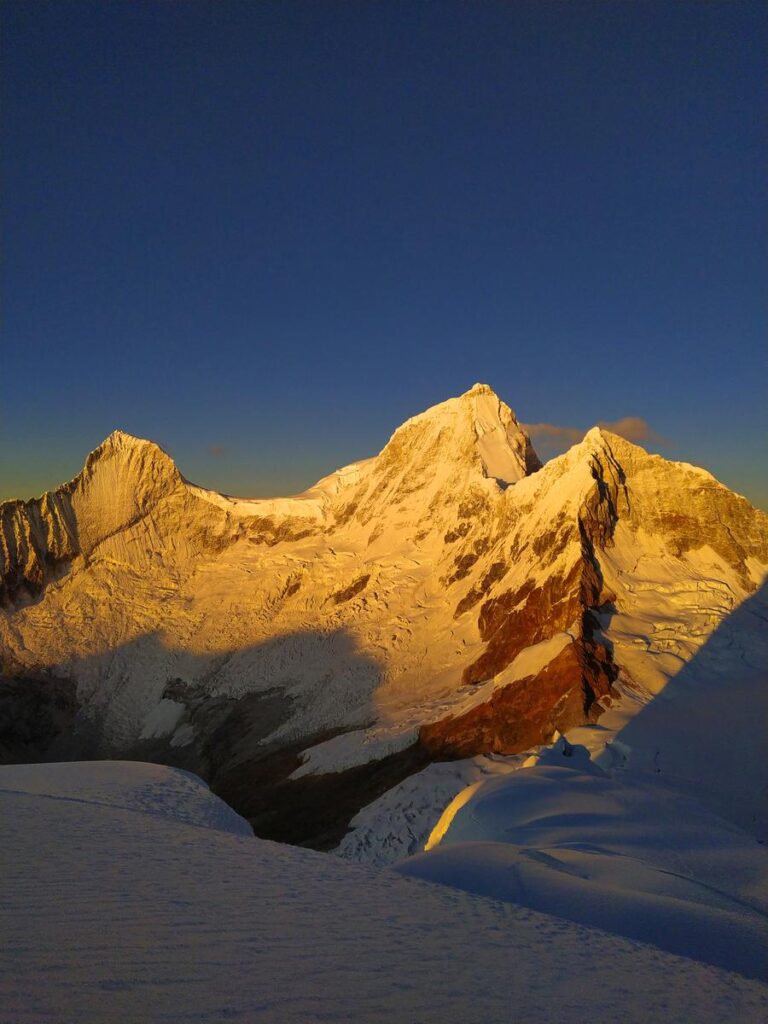
Day 12: Base camp (4600 m) – Laguna 69 - Cebollapampa (3900 m) - Huaraz
The twelfth and final day was the end of the expedition. We only had to walk for about 2 hours to reach Laguna 69, one of the most beautiful and famous lakes in the cordillera.
Laguna 69 has an intense turquoise color and is surrounded by the snow-capped peaks of Chacraraju and Pisco. It is an ideal place to relax and enjoy the scenery. After a brief stop to take photos and regain energy, we continued walking until we reached Cebollapampa, where a private transport was waiting for us to take us back to Huaraz.
Along the way, we were able to appreciate once again the beauty of the cordillera and its lakes. We arrived in Huaraz around 4 pm, where we said goodbye to our guide, who accompanied us throughout the adventure. It was an unforgettable experience that will be etched in our memory.
